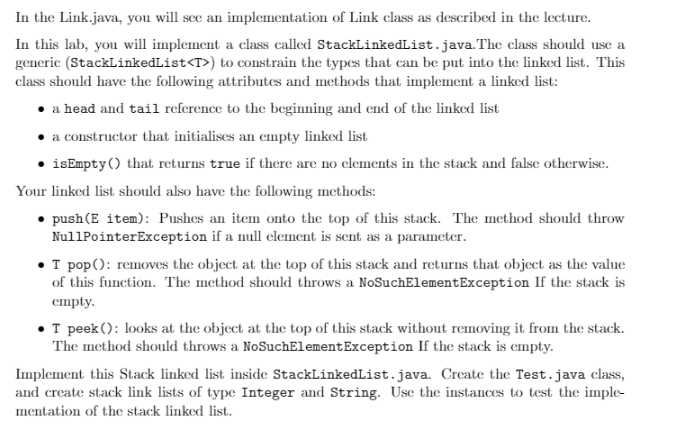Answered step by step
Verified Expert Solution
Question
1 Approved Answer
public class Link { private E e; // the element contained in this linked list private Link next; // the next element of the linked
public class Link{ private E e; // the element contained in this linked list private Link next; // the next element of the linked list public Link(E e, Link n) { this.e = e; this.next = n; } /** * Method to set the element */ public void setElement(E e) { this.e = e; } /** * Method to set the next linked list element */ public void setNext(Link e) { this.next = e; } /** * Method to get the element. */ public E getElement() { return this.e; } /** * Method to get the next linked list element */ public Link getNext() { return this.next; } }


Step by Step Solution
There are 3 Steps involved in it
Step: 1

Get Instant Access to Expert-Tailored Solutions
See step-by-step solutions with expert insights and AI powered tools for academic success
Step: 2

Step: 3

Ace Your Homework with AI
Get the answers you need in no time with our AI-driven, step-by-step assistance
Get Started


